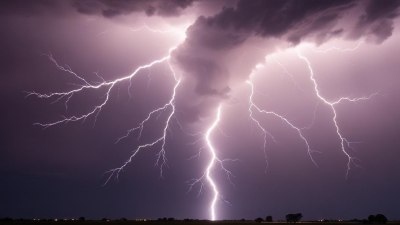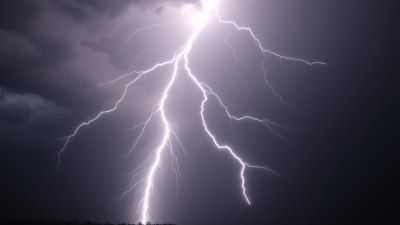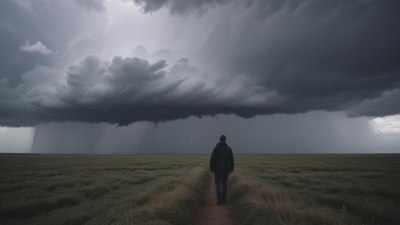Global Warming or Just an Excuse to Wear Shorts in December
Is climate change behind the warm December days, or are we just lucky enough to get an early spring?

Image by tawatchai07 on Freepik
It’s December, and the forecast is calling for sunny skies and temperatures warm enough to wear shorts. Is this a sign of global warming, or are we simply getting lucky with an unseasonably warm day? While we’d love to believe that the warmer weather is an excuse to break out the summer wardrobe a little earlier than expected, there’s a much bigger story behind those temperatures. Let’s explore the connection between global warming and unusual weather patterns, and whether wearing shorts in December is just a quirky coincidence or part of a much larger trend.
1. The Difference Between Weather and Climate
Before we dive into the specifics of December shorts weather, it’s important to understand the difference between weather and climate. Weather refers to the atmospheric conditions on a short-term basis—think days, weeks, or months—while climate refers to the long-term patterns and trends of temperature, precipitation, and weather events over decades or centuries. A warm December might feel like a one-off, but when we talk about global warming, we’re referring to the long-term rise in Earth’s average temperatures due to human activities like burning fossil fuels and deforestation.
2. Global Warming: What’s Really Happening?
Global warming refers to the increase in Earth’s average surface temperature, which has been steadily rising over the past century. While the natural climate has always gone through cycles of warming and cooling, the rapid increase in temperature over the past few decades is largely due to human activities, especially the burning of fossil fuels. This causes an increase in greenhouse gases like carbon dioxide, which trap heat in the atmosphere and cause the planet to warm. As a result, we’re seeing more extreme weather events, rising sea levels, and temperature shifts that don’t always follow the seasonal norms.
3. Why December Shorts Weather Isn’t as Random as It Seems
When temperatures in December are high enough for you to comfortably wear shorts, it might be tempting to chalk it up to an unusually warm day or just a stroke of good luck. But this warmer weather is becoming increasingly common due to global warming. Long-term trends show that average temperatures are rising across the globe, with some regions experiencing hotter summers and milder winters. As the Earth warms, we’re seeing shifts in seasonal weather patterns, and warm spells during typically cold months are becoming more frequent. So, while you might enjoy the warmth, it’s a sign of a bigger issue at play.
4. Short-Term Weather Changes vs. Long-Term Climate Trends
While one warm December day doesn’t necessarily prove that global warming is directly responsible, it’s important to consider the bigger picture. Weather patterns in the short term are influenced by many factors, including atmospheric pressure, jet streams, and ocean temperatures. However, if we start seeing more frequent instances of unusually warm weather during traditionally cold months, it could be an indicator that climate change is having an effect. In fact, research shows that the frequency of extreme weather events, like heatwaves and cold spells, is increasing due to the warming climate.
5. The Science Behind More Unpredictable Winters
One of the paradoxes of global warming is that it can actually lead to colder weather in some places. As the planet warms, the Arctic ice melts, causing disruptions in atmospheric circulation patterns. The jet stream, which normally helps keep cold air trapped in the polar regions, becomes weaker and more erratic. This can allow cold Arctic air to spill into areas where it wouldn’t normally be expected, while other regions experience warmer-than-usual temperatures. So, that December day of shorts weather might not be a one-time anomaly—it could be part of a shifting pattern.
6. When Warm Weather Becomes the New Normal
In some regions, warmer winters have already become the norm. Places that once experienced consistent cold temperatures throughout the winter now see a mix of chilly days and unseasonably warm ones. For instance, cities that once saw regular snowfall are now seeing fewer snowstorms and longer stretches of mild weather. As global temperatures continue to rise, these shifts in winter weather will likely become even more pronounced. If you’re starting to reach for your shorts more frequently in December, it’s possible that we’re seeing the effects of climate change playing out in real-time.
7. What You Can Do About It
While we may not be able to control the temperature of the day or the number of warm spells we’ll experience, there are things we can do to help slow down the effects of global warming. Reducing our carbon footprint, using renewable energy sources, and advocating for stronger environmental policies are all crucial steps in combating the long-term effects of climate change. Every small action counts, whether it’s taking public transportation, reducing waste, or supporting sustainable companies. The more we can reduce our impact, the less we’ll feel the effects of unpredictable weather.
8. Embrace the Shorts, but Stay Informed
It’s tempting to enjoy the warmer weather as an unexpected perk, but it’s also important to stay informed about the bigger picture. While wearing shorts in December might feel like a fun little break from the cold, it’s a reminder that the climate is shifting in ways that could affect us all in the long run. So, as you enjoy the sunshine, take a moment to reflect on how we can all contribute to making a difference in the fight against global warming. Who knows? Maybe next year, you’ll be wearing your shorts in February too—let’s just hope it’s not because the planet’s heating up beyond repair.











